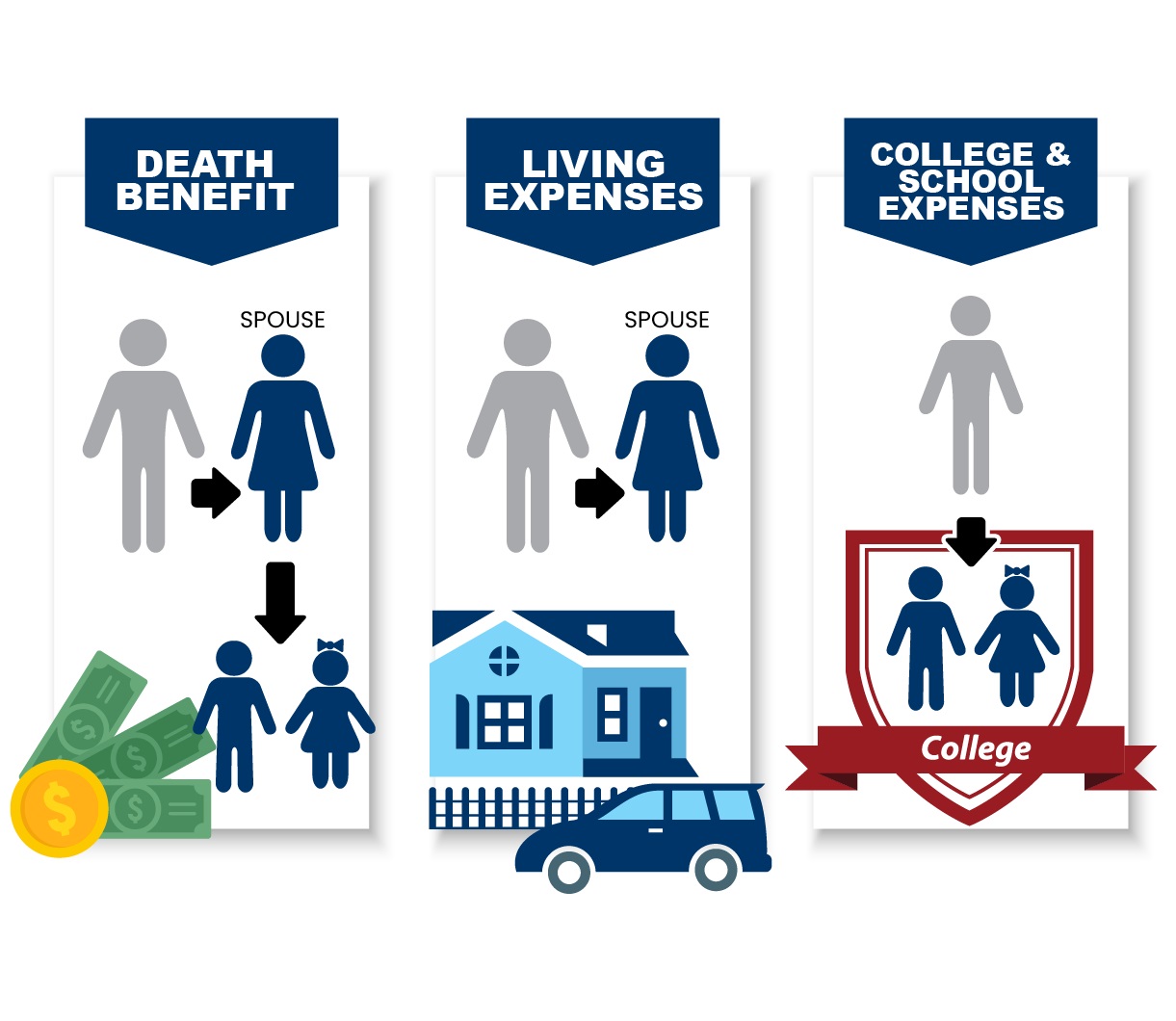Home>Finance>What Happens When An Insurance Policy Is Backdated?


Finance
What Happens When An Insurance Policy Is Backdated?
Modified: February 21, 2024
When an insurance policy is backdated, it can have significant implications on your finances. Find out what happens when this occurs and how it can potentially impact your financial situation.
(Many of the links in this article redirect to a specific reviewed product. Your purchase of these products through affiliate links helps to generate commission for LiveWell, at no extra cost. Learn more)
Table of Contents
Introduction
Insurance policies are critical financial tools that provide individuals and businesses with protection against potential risks and liabilities. These policies are typically issued with a start date, allowing policyholders to ensure coverage from that point onward. However, in some cases, individuals or businesses may seek to backdate their insurance policies, effectively assigning an earlier start date to the coverage.
Backdating an insurance policy involves adjusting its effective start date to a date earlier than the policy was actually issued. While this practice may seem harmless or even helpful in certain situations, it is important to understand the implications and legal considerations surrounding backdated policies.
Definition of Backdating
Backdating an insurance policy is the act of altering the effective start date of the policy to a date earlier than its issuance. This is done by either intentionally misrepresenting the start date or by submitting an application with a requested effective date in the past.
Legal Implications
While backdating insurance policies may seem like a simple administrative adjustment, it can have severe legal implications. The practice of backdating policies is generally disallowed, as it contradicts the principles of insurance contracts and can lead to fraudulent activities.
Effects on Coverage
The backdated start date of an insurance policy has significant implications for coverage. The policy becomes effective from the backdated date, meaning that any claims or incidents occurring before this start date would not be covered. This can leave policyholders exposed to potential risks and liabilities during the period before the backdated date.
Premium Adjustments
Backdating an insurance policy can impact the calculation of premiums. Insurance premiums are typically determined based on a variety of factors, including duration of coverage. When a policy is backdated, the duration of coverage is extended, which can result in adjustments to the premium amount. Policyholders may need to pay additional premiums for the extended coverage period or have their premiums retroactively adjusted.
Definition of Backdating
Backdating an insurance policy is the act of altering the effective start date of the policy to a date earlier than its issuance. This practice involves either intentionally misrepresenting the start date or submitting an application with a requested effective date in the past.
For example, let’s say an individual wants to purchase a life insurance policy but realizes they had a health scare a few months ago. If they were to backdate the policy, they would adjust the start date to a time before the health scare occurred. This way, they can avoid disclosing the health scare and potentially obtain coverage at a more affordable rate or without any exclusions related to the health issue.
It’s important to note that backdating an insurance policy is generally considered fraudulent and is not an acceptable practice in the insurance industry. Insurance is based on the principle of utmost good faith, where both parties involved in the contract must act honestly and disclose all relevant information. By backdating a policy, an individual is intentionally misrepresenting the facts and undermining the integrity of the insurance agreement.
Backdating can occur in various types of insurance policies, including life insurance, property insurance, and liability insurance. While individuals may have various reasons for wanting to backdate a policy, such as obtaining coverage for a past incident or reducing their premiums, it is crucial to understand the legal implications and potential consequences.
In some cases, insurers may have internal policies that allow for limited retroactive coverage on certain policies. This means that coverage can be extended to a specific date in the past, typically within a short time frame. However, this is different from backdating, as it is done with the knowledge and consent of both parties involved.
Overall, backdating an insurance policy is considered unethical and can result in severe consequences. It goes against the principles of transparency, fairness, and integrity that underpin the insurance industry. Policyholders are strongly advised to refrain from engaging in such practices and to seek proper guidance and advice when purchasing insurance coverage.
Legal Implications
Backdating an insurance policy can have severe legal implications due to its potential association with fraudulent activities. This practice contradicts the principles of insurance contracts, which require all parties involved to act in good faith and provide accurate and truthful information.
Insurance contracts are legally binding agreements that rely on the disclosure of accurate and up-to-date information. Backdating a policy involves intentionally misrepresenting the start date to create the appearance of coverage during a period in which the policyholder was actually uninsured. This is considered a form of fraud and can lead to serious legal consequences.
If an insurer discovers that a policy has been backdated, they may choose to take legal action against the policyholder. This can result in the policy being declared void ab initio, meaning that it is treated as if it never existed. The insurer may also refuse to pay any claims made under the backdated policy, leaving the policyholder responsible for any losses or liabilities incurred during the period before the actual policy start date.
Furthermore, engaging in such deceptive practices can impact an individual or business’s reputation and credibility. Insurance companies maintain records of policyholders, and fraudulent activities such as backdating can raise red flags and potentially lead to difficulties in obtaining insurance coverage in the future.
In some jurisdictions, backdating an insurance policy can also be considered a criminal offense. This can result in fines, penalties, or even imprisonment for those found guilty of committing insurance fraud. The severity of the legal consequences will vary depending on the laws of the specific jurisdiction and the nature of the fraudulent activity.
It’s important to note that unintentional errors or mistakes in the effective date of an insurance policy are different from deliberate backdating. In cases where a genuine error occurs, insurers may work with policyholders to rectify the situation and adjust the policy start date accordingly. However, it is crucial to promptly notify the insurer of any discrepancies or errors to avoid any potential legal issues.
Insurance is a regulated industry, and there are strict rules and regulations in place to protect the interests of both policyholders and insurers. Engaging in fraudulent activities like backdating not only compromises the integrity of the insurance system but can also result in severe legal and financial consequences. It is always best to adhere to the principles of honesty, transparency, and good faith when entering into insurance contracts.
Effects on Coverage
Backdating an insurance policy can have significant implications for coverage. When a policy is backdated, the effective start date is adjusted to a date earlier than the policy was actually issued. As a result, coverage begins from the backdated date, excluding any incidents or claims that occurred before that time.
This means that if a policyholder backdates their insurance policy, any incidents or claims that took place prior to the backdated start date will not be covered. For example, if a homeowner backdates their property insurance policy to cover a fire that occurred months ago, the insurer will likely deny any claim related to that fire, as it happened before the coverage period began.
The exclusion of pre-backdated incidents from coverage can leave policyholders at a significant financial risk. They may be liable for any damages, losses, or liabilities that occurred during the period before the policy’s backdated start date. This can have severe consequences, especially if the incidents result in costly legal actions or property damage.
It’s important to note that insurance policies are designed to provide protection against future risks and events. By backdating a policy, the insured party is attempting to alter the coverage to include incidents that have already occurred. This practice is contrary to the fundamental principles of insurance, which aim to distribute risks and provide coverage for future events, not past occurrences.
Furthermore, backdating a policy can also affect the calculation and adjustment of premiums. Insurance premiums are typically determined based on various factors, including the duration of coverage. When a policy is backdated, the coverage period is extended, potentially leading to adjustments in the premium amount.
Policyholders who backdate their policies may be required to pay additional premiums for the extended coverage period. Alternatively, if the backdated coverage period falls within a lower risk period, policyholders may benefit from a reduction in premiums. However, any adjustments to the premium amount will depend on the specific terms and conditions of the insurance policy and the insurer’s guidelines.
Overall, backdating an insurance policy can have significant implications for coverage. It can lead to the exclusion of pre-backdated incidents from coverage, potentially leaving the policyholder exposed to financial risks. It is crucial for individuals and businesses to understand that insurance policies are designed to protect against future events and to adhere to the principles of honesty and transparency when entering into insurance contracts.
Premium Adjustments
Backdating an insurance policy can impact the calculation and adjustment of premiums. Insurance premiums are typically determined based on various factors, including the duration of coverage. When a policy is backdated, the coverage period is effectively extended, which can result in adjustments to the premium amount.
If a policyholder requests a backdated start date that falls within a higher risk period, the insurer may require the payment of additional premiums to cover the extended coverage period. This is because the policyholder will be provided with insurance coverage for a longer duration, which increases the insurer’s potential liability. The additional premiums compensate the insurer for taking on the additional risk during the extended coverage period.
Conversely, if the backdated start date falls within a lower risk period, the insurer may adjust the premium amount to reflect the reduced risk exposure. For example, if a policyholder backdates their property insurance policy to exclude a hurricane season, during which the risk of property damage is higher, the insurer may lower the premium amount to account for the reduced risk during that period.
It is important to note that the specific premium adjustment process can vary among insurance companies and policies. Insurers may have their own guidelines and methodologies for calculating premium adjustments based on backdated coverage periods. Policyholders should consult their insurance providers to understand how their premiums may be affected by backdating a policy.
Policyholders should also be aware that adjusting premiums for backdated policies involves a retrospective analysis of risk and liability. Insurance companies take into account various factors, such as historical data, trends, and actuarial calculations, to determine the appropriate premium adjustment. This ensures that the policyholder is charged a fair and reasonable amount based on the extended or reduced coverage period.
It is crucial for policyholders to communicate with their insurance providers openly and honestly about any changes or adjustments to their policies, including backdating. Intentionally concealing or misrepresenting information about the backdated start date can be considered fraudulent and may result in the policy being declared void or the denial of future claims.
Lastly, policyholders should consider the potential long-term financial implications of backdating a policy. While a premium adjustment may provide short-term benefits in terms of lower or higher premiums, it is essential to evaluate the overall impact on coverage and the potential risks and liabilities that may arise from excluding or including incidents before the backdated start date.
In summary, backdating an insurance policy can lead to premium adjustments based on the extended or reduced coverage period. Policyholders may be required to pay additional premiums or receive adjusted premium amounts to reflect the increased or decreased risk exposure during the backdated period. It is crucial for policyholders to communicate with their insurance providers and understand the impact, both financially and in terms of coverage, before backdating a policy.
Underwriting Considerations
When it comes to backdating an insurance policy, there are several important underwriting considerations that insurance companies take into account. Underwriting is the process through which insurers assess risks and determine the terms and conditions of coverage for policyholders.
Underwriters carefully evaluate applications for insurance policies, considering factors such as the applicant’s risk profile, claims history, and the information provided in the application. Backdating a policy introduces additional complexities and risks that underwriters need to consider before making a decision.
The first consideration is the reason for the backdating request. Underwriters will assess whether the purpose is legitimate or if it indicates an attempt to obtain coverage for a past incident or manipulate premium rates. If the reason is deemed unreasonable or fraudulent, it may lead to the denial of coverage or other penalties.
Underwriters also consider the impact of the backdated coverage on the overall risk exposure for the insurer. By extending the coverage period, the insurer takes on additional liability, which can influence the underwriting decision. The underwriter will assess the extent of the risk exposure and determine if the insurer is able and willing to provide coverage for the extended period.
In some cases, the underwriter may request additional information or documentation to support the backdating request. This can include proof of the incident or event for which coverage is being sought, or any other relevant documentation to verify the legitimacy of the request. Providing accurate and truthful information is crucial during this process.
Underwriters also consider the impact of backdated policies on their own internal processes and systems. Backdating policies may require adjustments to administrative procedures and record-keeping. Insurers need to ensure they can accurately track and manage the policy’s coverage period and handle any potential claims that may arise within the backdated timeframe.
It’s important for policyholders to understand that underwriting decisions are made on a case-by-case basis, taking into account the specific circumstances and details of each individual application. The underwriter will evaluate the risks and benefits associated with backdating and make a decision accordingly.
Policyholders should be prepared to provide clear and honest explanations for their backdating request and be ready to comply with any additional requirements or documentation requested by the insurer. Open and transparent communication with the underwriter is essential throughout the underwriting process.
Overall, underwriting considerations play a vital role in determining the acceptance and terms of a backdated insurance policy. Policyholders should be aware that the decision ultimately rests with the insurer, and there may be instances where backdating is not allowed or where additional conditions or limitations are imposed. It is important to work closely with the insurance company and adhere to their guidelines and requirements throughout the underwriting process.
Fraud and Misrepresentation
Backdating an insurance policy can lead to situations of fraud and misrepresentation. Fraud involves intentionally deceiving or misleading others for personal gain, while misrepresentation refers to providing false or inaccurate information in an insurance application. Backdating policies can be seen as a form of both fraud and misrepresentation, as it involves intentionally altering the effective start date of a policy.
When a policyholder backdates an insurance policy, they are effectively misrepresenting the facts and misleading the insurer. By assigning an earlier start date, they create the appearance of coverage during a period when they were actually uninsured. This misrepresentation can have severe consequences and is a breach of the principles of utmost good faith, which are the foundation of insurance contracts.
Fraudulent backdating may be motivated by various factors. For instance, an individual might want to obtain coverage for an incident that occurred before the policy was issued. They may also seek to reduce their premium costs by excluding higher-risk periods. However, engaging in such practices is illegal and can result in serious consequences.
Insurance companies have robust systems in place to detect and investigate fraudulent activities. When backdating is discovered, insurers may declare the policy void ab initio, meaning that it is treated as if it never existed. This can result in the denial of any claims made under the backdated policy.
Policyholders who engage in fraudulent practices may also face legal consequences, such as fines, penalties, or even imprisonment. Insurance fraud is taken seriously by authorities, and knowingly backdating a policy can be considered a criminal offense in some jurisdictions.
It’s important to note that unintentional errors or omissions in the effective date of a policy are distinct from deliberate backdating. If a genuine mistake occurs, policyholders should promptly notify their insurer and rectify the situation. Open and honest communication is key to avoiding potentially fraudulent activities.
Additionally, misrepresenting information in an insurance application can have long-term implications beyond the immediate policy. It can tarnish a policyholder’s reputation within the insurance industry and make it difficult to obtain future coverage. Insurance companies maintain records of policyholders, and fraudulent activities can negatively impact an individual’s credibility and eligibility for insurance protection in the future.
Policyholders should remember that insurance is built on trust and mutual transparency. It is essential to provide accurate and truthful information when applying for coverage and to refrain from engaging in fraudulent practices such as backdating policies. Working with insurance professionals and trusted advisors can help ensure compliance with legal and ethical requirements while obtaining appropriate coverage for one’s needs.
Claim Rejection
Backdating an insurance policy can have serious consequences when it comes to the acceptance of claims. Insurance policies are contracts that outline the terms and conditions of coverage, including the effective start date. If a policy is backdated and an incident occurs before the backdated start date, the insurer may reject any related claims.
When policyholders backdate their insurance policies, they essentially exclude incidents or events that took place before the backdated start date from coverage. This means that any claims arising from those incidents will likely be denied by the insurer. For example, if a homeowner backdates their property insurance policy to cover a previous water damage incident, the insurer may reject any claims related to that incident since it occurred before the effective start date.
Insurance companies have strict guidelines and procedures in place for evaluating claims. They conduct investigations to determine the cause and timing of the incident, verify the policy terms, and ensure that the claim falls within the defined coverage period. If it is discovered that the policyholder backdated the policy, the insurer may argue that the incident falls outside the coverage period and, therefore, deny the claim.
Claim rejection due to backdating can have significant financial implications for policyholders. They may be responsible for covering the costs and damages associated with the incident out of their own pocket. This can be particularly devastating if the incident involves significant property damage, medical expenses, or liability claims.
It’s important to understand that insurance is designed to provide coverage for unforeseen events and risks that occur after the policy’s effective start date. Backdating a policy goes against this basic principle and can result in the denial of claims. It is crucial for policyholders to accurately disclose all relevant information and adhere to the terms and conditions outlined in their insurance contracts.
Furthermore, engaging in fraudulent activities such as backdating policies can lead to more than just claim rejections. Insurance companies have fraud detection systems in place to identify suspicious activities and patterns. If a policyholder’s fraudulent actions are discovered, it can have long-term consequences, including difficulty obtaining future insurance coverage, legal consequences, and damage to their reputation within the insurance industry.
Insurance is based on trust and good faith. Any attempts to deceive or manipulate the terms of the policy, such as backdating, undermine the integrity of the insurance system and can result in serious repercussions. Policyholders are strongly advised to refrain from backdating policies and to work with their insurance providers honestly and transparently to ensure proper coverage and claims handling.
Examples of Backdated Insurance Policies
While backdating an insurance policy is generally considered fraudulent and unethical, it is still important to understand some examples of how individuals or businesses have attempted to backdate policies. These examples highlight the potential motivations and consequences associated with backdating.
1. Health Insurance: An individual who recently underwent surgery and incurred significant medical expenses may try to backdate their health insurance policy to include coverage for the surgical procedure. By assigning an earlier start date, they hope to avoid disclosing the pre-existing condition and secure insurance coverage for the medical costs associated with the surgery.
2. Car Insurance: A driver who has been involved in an accident but does not currently have car insurance may attempt to backdate an insurance policy to cover the damages. By backdating the policy, they seek to create the appearance of coverage during the time of the accident and potentially receive compensation for the vehicle repairs or liability claims.
3. Property Insurance: A homeowner who experienced a significant loss, such as a fire or flood, may try to backdate their property insurance policy to include coverage for the incident. They may do this to avoid disclosing previous damage or to receive a higher claim payout for the covered losses that occurred before the actual policy start date.
4. Liability Insurance: A business facing a potential lawsuit or claim might attempt to backdate their liability insurance policy to include coverage for the alleged incident. By altering the start date, the business hopes to shift the responsibility and potential liability for the event to the insurance company, mitigating the financial impact on their own operations.
It is crucial to note that these are hypothetical examples provided to illustrate the motivations behind backdating insurance policies. Engaging in such practices is highly discouraged and can result in severe legal and financial consequences, as well as damage to one’s reputation in the insurance industry.
Insurance companies have strict procedures and systems in place to identify and prevent fraudulent activities. They conduct thorough investigations, assess claims based on accurate information, and may ask for supporting documentation to validate the incidents and effective dates of coverage. Deliberate attempts to backdate policies are likely to be discovered during this process, leading to claim rejection and potential legal actions against the policyholder.
When it comes to insurance, it is essential to act with honesty and integrity. Policyholders should disclose accurate information, adhere to the terms and conditions of their policies, and approach their insurance providers with transparency. This ensures a fair and ethical insurance process for all parties involved.
Conclusion
Backdating an insurance policy is a practice that should be avoided due to its potential legal and ethical implications. While individuals or businesses may be tempted to backdate policies for various reasons, it is essential to understand the consequences associated with this practice.
Backdating an insurance policy is generally considered fraudulent and can result in severe penalties. Insurance is based on the principles of utmost good faith and requires all parties involved to act honestly and transparently. Altering the effective start date of a policy through backdating goes against these principles and undermines the integrity of the insurance contract.
The effects of backdating on coverage can be significant, potentially leaving policyholders exposed to risks and liabilities during the period before the backdated start date. Claims related to incidents that occurred before the backdated date are likely to be rejected by the insurer, leading to potentially significant out-of-pocket expenses for the policyholder.
Premium adjustments may also come into play when a policy is backdated. Extending the coverage period can result in additional premiums, while reducing the risk exposure during lower-risk periods may lead to premium reductions. However, policyholders should consider the overall impact on coverage and evaluate the potential risks and liabilities associated with excluding or including incidents before the backdated start date.
Engaging in backdating practices can also have long-term consequences, including difficulties in obtaining future insurance coverage, potential legal actions, and damage to one’s reputation within the insurance industry.
It is important for individuals and businesses to approach insurance with honesty and transparency. Open communication with insurance providers, accurate disclosure of information, and adherence to the terms and conditions of policies are crucial to ensuring a fair and ethical insurance process.
Ultimately, insurance is designed to protect against future risks and incidents. It is essential to act in good faith, maintain integrity, and refrain from engaging in fraudulent practices like backdating policies. By doing so, policyholders can ensure that they have appropriate coverage for their needs and maintain a positive relationship with their insurance providers.














